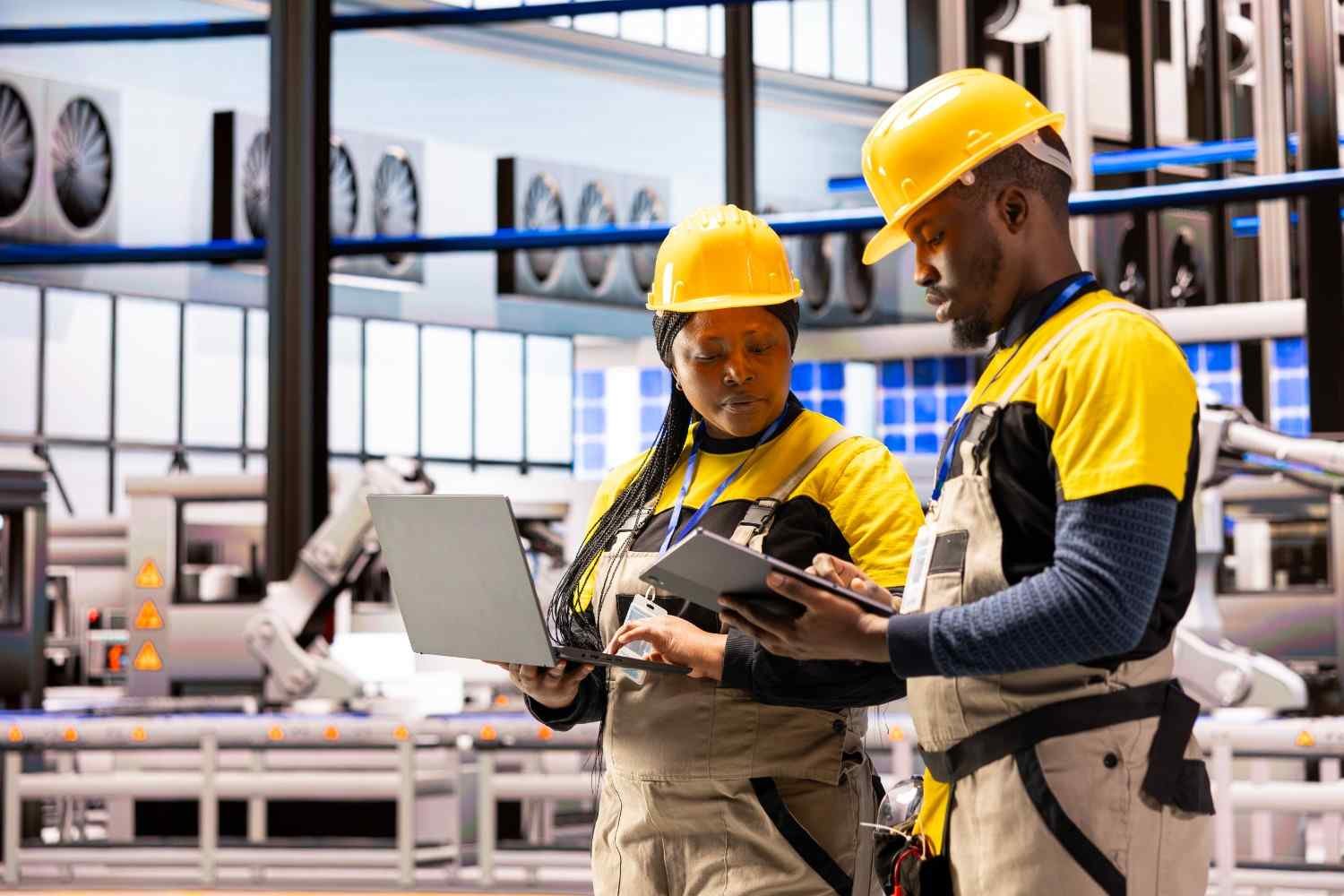The American aerospace industry stands as a global powerhouse, driving innovation in aviation, space exploration, and defense technologies while creating exceptional career opportunities for mechanical engineers worldwide. Leading aerospace manufacturers and defense contractors actively recruit international talent, offering comprehensive visa sponsorship programs to attract the brightest engineering minds from across the globe. This thriving sector presents remarkable possibilities for skilled mechanical engineers seeking to advance their careers while contributing to groundbreaking technological developments that shape the future of flight and space exploration.
The intersection of mechanical engineering and aerospace technology creates some of the most challenging and rewarding career paths in modern engineering. From designing next-generation aircraft engines to developing spacecraft systems for Mars missions, mechanical engineers in the aerospace sector work at the cutting edge of human technological achievement. The industry’s commitment to recruiting international talent reflects both the global nature of aerospace innovation and the critical need for diverse perspectives in solving complex engineering challenges.
The Current State of the US Aerospace Industry and Engineering Talent Demand
The United States aerospace and defense sector generates over $900 billion in annual economic activity, employing millions of professionals across manufacturing, research, development, and support functions. This massive industry encompasses commercial aviation, military aircraft development, space exploration systems, satellite technology, and emerging fields like urban air mobility and commercial space travel. The sector’s continuous growth and technological advancement create sustained demand for mechanical engineers with specialized skills and innovative thinking.
Major aerospace companies face significant challenges in finding qualified mechanical engineers to fill critical positions. The complexity of modern aerospace systems requires engineers with advanced technical knowledge, practical problem-solving abilities, and the capacity to work on interdisciplinary teams. This talent shortage has prompted aerospace companies to expand their recruitment efforts globally, implementing robust visa sponsorship programs to attract international mechanical engineers who can contribute to their ambitious projects and technological goals.
The commercial aviation sector continues its recovery and expansion, with aircraft manufacturers ramping up production to meet airline demand for more fuel-efficient and environmentally sustainable aircraft. Boeing and Airbus, along with their extensive supplier networks, require thousands of mechanical engineers to design, test, and optimize aircraft structures, propulsion systems, and mechanical components. The development of next-generation aircraft, including electric and hybrid-electric propulsion systems, creates new opportunities for engineers with expertise in emerging technologies.
Space exploration and satellite industries have experienced unprecedented growth, driven by both government programs and commercial ventures. NASA’s Artemis program aims to return humans to the Moon and eventually send astronauts to Mars, requiring mechanical engineers to develop life support systems, landing vehicles, and habitat structures. Commercial space companies like SpaceX, Blue Origin, and Virgin Galactic are revolutionizing space access, creating numerous opportunities for mechanical engineers passionate about space technology.
The defense aerospace sector maintains steady demand for mechanical engineers working on military aircraft, unmanned aerial systems, and advanced weapons platforms. Programs like the F-35 fighter jet, next-generation bombers, and hypersonic weapons systems require continuous engineering support throughout their operational lifecycles. International mechanical engineers with appropriate security clearance eligibility can find rewarding careers contributing to national security while working with cutting-edge technology.
Leading Aerospace Companies Offering Visa Sponsorship Programs
Several prominent aerospace corporations have established themselves as leaders in international recruitment, developing comprehensive visa sponsorship programs that support foreign mechanical engineers throughout the immigration process. These companies recognize that global talent acquisition is essential for maintaining technological leadership and competitive advantage in the international aerospace market.
Boeing, as one of the world’s largest aerospace companies, maintains extensive visa sponsorship programs for mechanical engineers across its commercial aircraft, defense, space, and services divisions. The company employs thousands of international engineers working on projects ranging from the 737 and 787 commercial aircraft to the Space Launch System for NASA. Boeing’s global presence and diverse portfolio create opportunities for mechanical engineers specializing in structures, propulsion, systems integration, and manufacturing engineering.
Lockheed Martin, a leading defense contractor and aerospace manufacturer, actively recruits international mechanical engineers for positions in aircraft development, missile systems, space vehicles, and advanced technology programs. The company’s Skunk Works division, famous for developing revolutionary aircraft like the SR-71 Blackbird and F-117 Nighthawk, continues to push technological boundaries, offering unique opportunities for innovative engineers. Lockheed Martin’s visa sponsorship support includes assistance with H-1B applications and green card processing for eligible employees.
Northrop Grumman offers mechanical engineering positions across its aerospace systems, defense electronics, and space technology divisions. The company’s work on programs like the B-21 Raider bomber and James Webb Space Telescope demonstrates the diverse and challenging projects available to mechanical engineers. Northrop Grumman’s commitment to innovation and technology development creates opportunities for engineers interested in autonomous systems, advanced materials, and space exploration technologies.
Raytheon Technologies, formed through the merger of Raytheon and United Technologies, provides extensive opportunities for mechanical engineers in both defense and commercial aerospace sectors. The company’s Pratt & Whitney division designs and manufactures aircraft engines, while Collins Aerospace develops aircraft systems and components. This diversity allows mechanical engineers to work on various projects while potentially transitioning between commercial and defense applications throughout their careers.
SpaceX has emerged as a major employer of mechanical engineers, revolutionizing space transportation with reusable rocket technology and ambitious plans for Mars colonization. The company’s rapid growth and innovative culture attract engineers seeking to work on transformative space technologies. While SpaceX faces certain restrictions on hiring foreign nationals due to export control regulations, the company does sponsor visas for positions not subject to these limitations, particularly in manufacturing and commercial satellite deployment.
General Dynamics, Textron, L3Harris Technologies, and numerous other aerospace companies also offer visa sponsorship for qualified mechanical engineers. Additionally, the extensive aerospace supply chain includes hundreds of smaller companies and specialized suppliers that provide components and services to major manufacturers. Many of these suppliers actively recruit international talent and offer visa sponsorship for critical engineering positions.
Diverse Mechanical Engineering Roles in Aerospace
The aerospace industry offers mechanical engineers an extraordinary range of specializations and career paths, each presenting unique challenges and opportunities for professional growth. Understanding these different roles helps international engineers identify positions aligning with their skills, interests, and career objectives.
Structural design engineers focus on developing aircraft and spacecraft structures that meet stringent requirements for strength, weight, and durability. These engineers use advanced computer-aided design tools and finite element analysis software to optimize structural components, from aircraft fuselages to satellite frameworks. The challenge of creating structures that withstand extreme forces while minimizing weight requires deep understanding of materials science, stress analysis, and manufacturing processes.
Propulsion system engineers work on the engines and power systems that propel aircraft and spacecraft. This specialization encompasses jet engines, rocket motors, electric propulsion systems, and emerging technologies like scramjets and nuclear propulsion. Mechanical engineers in propulsion roles design turbine components, combustion chambers, nozzles, and cooling systems that operate under extreme temperatures and pressures. The push for more efficient and environmentally friendly propulsion systems creates opportunities for engineers to develop revolutionary technologies.
Systems integration engineers ensure that complex mechanical systems work together seamlessly within aerospace vehicles. These engineers coordinate between different engineering disciplines, managing interfaces between structural, propulsion, avionics, and environmental control systems. The role requires broad technical knowledge and strong communication skills to resolve conflicts between competing system requirements while maintaining overall vehicle performance objectives.
Manufacturing engineers translate designs into producible hardware, developing processes and tooling for aerospace component production. These engineers work closely with production teams to optimize manufacturing efficiency, improve quality control, and reduce costs. The aerospace industry’s adoption of advanced manufacturing technologies like additive manufacturing and automated composite fabrication creates opportunities for engineers to pioneer new production methods.
Test engineers design and conduct experiments to validate aerospace systems’ performance and safety. From component testing in laboratory environments to full-scale vehicle testing in wind tunnels and flight tests, these engineers ensure that products meet rigorous certification requirements. The role combines theoretical knowledge with practical problem-solving skills, as test engineers must interpret complex data and troubleshoot unexpected results.
Thermal management engineers address the critical challenge of controlling temperatures in aerospace systems. Whether designing cooling systems for aircraft engines, thermal protection for spacecraft entering planetary atmospheres, or temperature control for sensitive electronic equipment, these specialists ensure that components operate within acceptable temperature ranges despite extreme environmental conditions.
Materials engineers in aerospace focus on developing and applying advanced materials that offer superior performance characteristics. From carbon fiber composites to high-temperature superalloys and emerging nanomaterials, these engineers push the boundaries of material capabilities. The constant drive for lighter, stronger, and more durable materials creates continuous opportunities for innovation and research.
Educational Requirements and Essential Skills
Success in securing mechanical engineering positions at US aerospace companies requires a combination of formal education, technical expertise, and soft skills that enable effective collaboration in complex, multicultural environments. International candidates must demonstrate qualifications that meet or exceed industry standards while showing potential for continued growth and contribution to aerospace innovation.
Educational credentials form the foundation for aerospace engineering careers. A bachelor’s degree in mechanical engineering or closely related fields like aerospace engineering, materials science, or applied mechanics typically serves as the minimum requirement. However, many positions, particularly those involving advanced research or specialized technical areas, prefer or require master’s degrees. Doctoral degrees prove valuable for research-oriented positions or roles requiring deep expertise in specific technical domains.
International degrees require careful evaluation for US equivalency, with most employers accepting credentials from accredited international universities. Graduates from well-regarded engineering programs often find their qualifications readily recognized, though some positions may require additional certification or coursework to meet specific industry standards. The ABET accreditation of engineering programs, while primarily a US standard, has international reach and provides a recognized benchmark for engineering education quality.
Technical proficiency in engineering software tools proves essential for modern aerospace engineering. Computer-aided design platforms like CATIA, NX, and SolidWorks form the backbone of aerospace design processes. Finite element analysis software such as ANSYS and NASTRAN enables engineers to simulate and optimize structural performance. Computational fluid dynamics tools help analyze aerodynamic characteristics and fluid flow behaviors. Programming skills in languages like MATLAB, Python, and C++ increasingly prove valuable for automation and data analysis tasks.
Specialized knowledge areas enhance candidates’ attractiveness to aerospace employers. Understanding of aerospace-specific standards and regulations, including FAA certification requirements and military specifications, proves valuable. Familiarity with systems engineering principles and model-based design approaches aligns with industry trends toward integrated product development. Knowledge of lean manufacturing principles and Six Sigma methodologies demonstrates readiness for modern aerospace production environments.
Communication skills and language proficiency play crucial roles in aerospace engineering success. The ability to write clear technical reports, present complex ideas to diverse audiences, and collaborate effectively with international teams proves essential. English proficiency, both written and verbal, must be sufficient for technical discussions, documentation creation, and safety-critical communications. Many successful international engineers emphasize that strong communication skills often differentiate candidates with similar technical qualifications.
Visa Sponsorship Process and Immigration Pathways
The journey from international mechanical engineering graduate to aerospace professional in the United States involves navigating complex immigration processes that vary based on individual circumstances and employer capabilities. Understanding available visa categories and sponsorship procedures helps candidates plan their career paths and make informed decisions about opportunities.
The H-1B visa serves as the primary employment-based visa category for mechanical engineers entering the US aerospace industry. This specialty occupation visa requires employers to demonstrate that positions require specialized knowledge and that foreign workers possess necessary qualifications through education and experience. The annual H-1B lottery system introduces uncertainty, as demand typically exceeds the 85,000 available visas, including 20,000 reserved for advanced degree holders from US institutions.
Aerospace companies typically begin the H-1B sponsorship process months before the April filing window, conducting interviews and extending offers to selected candidates by early in the calendar year. This timeline allows for thorough preparation of visa petitions, including detailed job descriptions, educational credential evaluations, and prevailing wage determinations. Companies often work with specialized immigration law firms to ensure applications meet all regulatory requirements and maximize approval chances.
The Labor Condition Application forms a critical component of the H-1B process, requiring employers to attest that they will pay prevailing wages and that hiring foreign workers won’t adversely affect working conditions for US employees. For mechanical engineers in aerospace, prevailing wage requirements often result in competitive compensation packages that reflect the high demand for technical expertise.
International students graduating from US universities benefit from Optional Practical Training programs that provide temporary work authorization while navigating longer-term visa processes. The STEM OPT extension allows eligible mechanical engineering graduates to work for up to three years, providing valuable time to gain experience and potentially participate in multiple H-1B lottery cycles. Aerospace companies actively recruit from US universities, recognizing the value of candidates already familiar with American engineering practices and culture.
The L-1 intracompany transfer visa offers an alternative pathway for mechanical engineers already working for multinational aerospace companies. Engineers employed by companies with US operations may qualify for L-1 transfers after one year of employment abroad. This route bypasses the H-1B lottery and provides a more predictable path to US employment, though it requires prior employment with the sponsoring company.
Treaty-based visas provide additional options for citizens of certain countries. The E-2 treaty investor visa may apply to engineers involved in substantial business investments, while the TN visa under the USMCA agreement offers streamlined processing for Canadian and Mexican citizens. These alternatives can provide faster entry to the US job market, though they may have limitations regarding long-term residency options.
Compensation Packages and Career Benefits
Mechanical engineers in the US aerospace industry enjoy competitive compensation packages that reflect the specialized nature of their work and the high demand for technical expertise. Understanding salary structures, benefits, and long-term financial opportunities helps international engineers evaluate offers and negotiate effectively with potential employers.
Base salaries for mechanical engineers in aerospace vary significantly based on experience, education, location, and specific role responsibilities. Entry-level positions typically offer starting salaries ranging from $75,000 to $95,000 annually, with higher amounts in expensive metropolitan areas or for candidates with advanced degrees. Mid-career engineers with five to ten years of experience commonly earn between $95,000 and $130,000, while senior engineers and technical specialists can command salaries exceeding $150,000.
Geographic location significantly influences compensation levels. Aerospace hubs in Southern California, Seattle, and the Washington D.C. area typically offer higher salaries to offset elevated living costs. However, aerospace facilities in lower-cost regions like Alabama, Kansas, and Texas may provide comparable or better purchasing power despite nominally lower salaries. International engineers should carefully evaluate cost of living factors when comparing opportunities in different locations.
Performance bonuses and incentive compensation supplement base salaries at most aerospace companies. Annual bonuses typically range from 5% to 15% of base salary, tied to individual performance evaluations and company financial results. Some companies offer spot bonuses for exceptional contributions to critical projects or successful resolution of technical challenges. Long-term incentive programs, including restricted stock units or performance shares, provide additional compensation for senior engineers and technical leaders.
Comprehensive benefits packages add substantial value beyond monetary compensation. Health insurance coverage, including medical, dental, and vision plans, represents significant value in the US healthcare system. Retirement benefits typically include 401(k) plans with company matching contributions, with some traditional aerospace companies still offering defined benefit pension plans. Life insurance, disability coverage, and flexible spending accounts provide additional financial security for employees and their families.
Professional development opportunities enhance long-term career value. Aerospace companies often provide tuition reimbursement for advanced degrees or professional certifications. Conference attendance, technical training courses, and leadership development programs help engineers advance their careers while staying current with technological advances. Some companies offer rotation programs that expose engineers to different divisions and technical areas, broadening their expertise and career options.
Work-life balance benefits have become increasingly important in attracting and retaining engineering talent. Flexible work schedules, telecommuting options for appropriate positions, and generous paid time off policies help engineers maintain personal well-being. Many aerospace companies offer on-site amenities like fitness centers, cafeterias, and childcare facilities. Parental leave policies have expanded significantly, with leading companies offering several months of paid leave for new parents.
Security Clearances and Export Control Considerations
The aerospace industry’s involvement in defense and dual-use technologies creates unique considerations for international mechanical engineers regarding security clearances and export control regulations. Understanding these requirements helps candidates identify suitable opportunities and plan their career progression within the constraints of regulatory frameworks.
Export control regulations, particularly the International Traffic in Arms Regulations and Export Administration Regulations, govern access to certain technical information and hardware. These regulations classify aerospace technologies based on their military applications and sensitivity, restricting foreign nationals’ access to controlled technical data. While these restrictions can limit opportunities in certain defense-related positions, many aerospace engineering roles remain accessible to international professionals.
Security clearance requirements present more significant challenges for non-US citizens. Secret and Top Secret clearances typically require US citizenship, effectively excluding international engineers from certain defense programs and classified projects. However, the aerospace industry includes vast unclassified work areas where international engineers can build successful careers. Commercial aircraft development, civilian space programs, and general research activities often don’t require security clearances.
Some aerospace companies have developed strategies to maximize international engineers’ contributions while complying with regulatory requirements. Creating separate facilities or programs for unclassified work allows companies to leverage international talent effectively. Technology Control Plans and export licenses can provide frameworks for foreign nationals to access certain controlled technologies when necessary for their job functions. Understanding these mechanisms helps international engineers identify companies and positions where they can work most effectively.
The distinction between fundamental research and applied development affects international engineers’ opportunities in aerospace. Universities and research institutions conducting fundamental research generally face fewer restrictions on international participation. This creates opportunities for international engineers to contribute to advanced aerospace research while potentially transitioning to industry positions as their immigration status evolves toward permanent residency or citizenship.
Long-term career planning for international engineers should consider how security clearance limitations might affect advancement opportunities. While certain senior positions in defense-focused companies may require clearances, many technical leadership and management roles remain accessible. Some international engineers strategically focus on commercial aerospace or emerging technologies not subject to strict export controls, building expertise in areas where their contributions face fewer regulatory constraints.
Emerging Technologies and Future Opportunities
The aerospace industry stands at the threshold of revolutionary changes driven by technological advancement, environmental imperatives, and evolving market demands. These transformations create exciting opportunities for mechanical engineers to work on groundbreaking projects that will define the future of aviation and space exploration.
Sustainable aviation has become a primary focus for the aerospace industry, driving development of electric and hybrid-electric aircraft propulsion systems. Mechanical engineers work on battery technology integration, electric motor design, and thermal management systems for electric aircraft. Hydrogen fuel cell technology presents additional opportunities, requiring engineers to develop storage systems, fuel delivery mechanisms, and safety protocols for hydrogen-powered aircraft. These green technologies create new specializations for mechanical engineers passionate about environmental sustainability.
Urban air mobility and electric vertical takeoff and landing aircraft represent entirely new categories of aerospace vehicles. Companies developing flying taxis and autonomous air vehicles need mechanical engineers to solve unique challenges in lightweight structures, distributed propulsion, and noise reduction. The convergence of aerospace and automotive technologies in these vehicles creates opportunities for engineers with diverse technical backgrounds.
Advanced manufacturing technologies are transforming how aerospace components are produced. Additive manufacturing enables creation of complex geometries impossible with traditional manufacturing methods, requiring engineers who understand both design possibilities and process limitations. Automated composite manufacturing, robotic assembly, and digital twin technologies create opportunities for engineers interested in the intersection of mechanical design and manufacturing innovation.
Space commercialization continues accelerating, with private companies developing space stations, lunar landers, and Mars transportation systems. The growing space economy encompasses satellite mega-constellations for global internet coverage, space tourism vehicles, and in-space manufacturing facilities. Mechanical engineers can contribute to these ventures through work on life support systems, deployable structures, and spacecraft mechanisms designed for the harsh space environment.
Hypersonic flight technology has gained renewed attention for both military and civilian applications. Developing vehicles capable of sustained flight at speeds exceeding Mach 5 requires breakthrough advances in materials, thermal protection, and propulsion systems. Mechanical engineers working on hypersonic technologies tackle some of the most challenging problems in aerospace, from managing extreme heat loads to designing structures that maintain integrity under severe aerodynamic forces.
Artificial intelligence and machine learning integration into aerospace systems creates opportunities for mechanical engineers with computational skills. AI-driven design optimization, predictive maintenance systems, and autonomous flight control require engineers who can bridge mechanical engineering and computer science. The ability to apply machine learning to structural health monitoring, manufacturing quality control, and system performance optimization becomes increasingly valuable.
Strategies for Successful Application and Career Development
Securing mechanical engineering positions at US aerospace companies requires strategic preparation, effective self-presentation, and understanding of industry-specific recruitment practices. International candidates who approach the application process systematically and professionally significantly improve their chances of success.
Resume optimization for aerospace positions demands careful attention to technical detail while maintaining clarity and conciseness. Highlighting specific aerospace projects, relevant coursework, and technical skills that align with job requirements proves essential. Quantifying achievements through metrics like weight reduction percentages, efficiency improvements, or cost savings demonstrates tangible value. Including software proficiencies, programming languages, and industry-specific tools helps automated screening systems identify qualified candidates.
Portfolio development has become increasingly important for mechanical engineers seeking aerospace positions. Creating a professional portfolio showcasing design projects, analysis work, and technical problem-solving abilities provides concrete evidence of capabilities. Including academic projects, competition entries, or personal aerospace-related projects demonstrates passion and initiative. Online portfolios or GitHub repositories for programming projects offer accessible ways to share work with potential employers.
Networking within the aerospace community opens doors to opportunities and provides valuable industry insights. Professional organizations like the American Institute of Aeronautics and Astronautics offer student and professional memberships that facilitate networking. Attending aerospace conferences, career fairs, and industry events creates opportunities for direct interaction with employers. LinkedIn has become an essential platform for aerospace professionals, enabling connections with recruiters and industry professionals worldwide.
Interview preparation for aerospace positions requires both technical and behavioral readiness. Technical interviews often include problem-solving exercises, design challenges, and discussions of past projects. Preparing clear explanations of technical work, including challenges faced and solutions developed, helps demonstrate competence. Behavioral interviews assess cultural fit, teamwork abilities, and communication skills. International candidates should prepare examples demonstrating adaptability, cross-cultural collaboration, and ability to work in diverse teams.
Continuous learning and skill development remain crucial throughout aerospace careers. Pursuing professional certifications like Professional Engineer licensure or specialized aerospace certifications enhances credibility and career prospects. Staying current with industry trends through technical publications, webinars, and online courses demonstrates commitment to professional growth. Many successful international engineers pursue advanced degrees part-time while working, leveraging employer tuition assistance programs.
Building a professional reputation within the aerospace community accelerates career advancement. Contributing to technical conferences, publishing research papers, or participating in industry standards committees establishes expertise recognition. Mentoring junior engineers or participating in educational outreach demonstrates leadership and communication abilities valued by employers. Active involvement in company initiatives beyond assigned responsibilities shows initiative and leadership potential.
Conclusion: Launching Your Aerospace Engineering Career in America
The path to securing mechanical engineering positions at US aerospace companies with visa sponsorship represents both a significant challenge and an extraordinary opportunity for international engineers. The American aerospace industry’s continuous innovation, technological leadership, and global impact create an environment where talented engineers from around the world can build rewarding careers while contributing to humanity’s greatest technological achievements.
The journey requires careful planning, persistent effort, and strategic decision-making at each stage. From developing technical expertise and obtaining necessary credentials to navigating visa processes and adapting to American workplace culture, success demands dedication and resilience. However, the rewards justify the effort: competitive compensation, opportunities to work on cutting-edge technologies, and the satisfaction of contributing to projects that advance human capabilities in aviation and space exploration.
The aerospace industry’s recognition of international talent’s value ensures continued opportunities for qualified mechanical engineers. As companies compete for the best engineering minds globally, visa sponsorship has become a standard tool for accessing critical technical expertise. This commitment to international recruitment reflects the fundamental reality that aerospace innovation transcends national boundaries and benefits from diverse perspectives and experiences.
Looking ahead, the aerospace industry’s trajectory promises even greater opportunities for mechanical engineers. The convergence of traditional aerospace with emerging technologies like artificial intelligence, sustainable energy, and advanced manufacturing creates new specializations and career paths. International engineers entering the industry today will help shape the future of human flight, space exploration, and technological advancement.
For mechanical engineers worldwide considering aerospace careers in the United States, the message is clear: the American aerospace industry offers unparalleled opportunities for those with the skills, determination, and vision to pursue them. While the path may be complex, requiring navigation of immigration processes and regulatory requirements, the destination—a career at the forefront of aerospace innovation—rewards those who persevere.
The stories of countless international engineers who have successfully built aerospace careers in America serve as inspiration and proof that these opportunities are achievable. Their contributions have been instrumental in maintaining American aerospace leadership while advancing global technological progress. As the industry continues evolving and expanding, new generations of international mechanical engineers will find their own paths to success, adding their unique perspectives and capabilities to the ongoing adventure of aerospace exploration and innovation.
The aerospace industry’s future depends on attracting and retaining the world’s best engineering talent. For international mechanical engineers ready to embrace this challenge, American aerospace companies offer not just jobs, but careers that can define a lifetime of achievement and contribution to one of humanity’s most ambitious endeavors. The sky is no longer the limit—it’s just the beginning.






